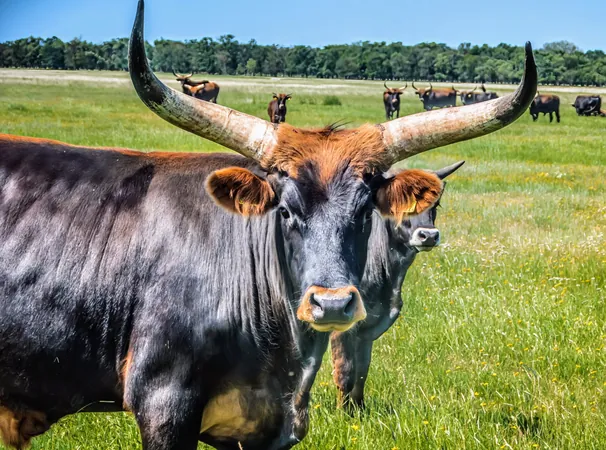
The Aurochs: How Climate and Culture Shaped a Legendary Prehistoric Beast
2024-11-03
Author: Jacques
For millennia, the awe-inspiring aurochs has captured the imagination of humanity. This formidable creature, whose likeness is immortalized in ancient cave paintings, played a pivotal role in ecosystems across Eurasia and North Africa and produced the domestic cattle that we rely on today.
Recently, an international team of geneticists, in partnership with Trinity College Dublin, delved into the fascinating history of the aurochs (Bos primigenius) through the lens of ancient DNA. This research sheds light not only on the extinct aurochs but also on the evolution of domestic cattle, which have been indispensable to human civilization for thousands of years.
By meticulously sequencing and analyzing 38 genomes sourced from aurochs bones collected across a remarkable timeline of 50,000 years—from Siberia to Britain—the researchers unveiled intricate details about the genetic diversity that characterized this prehistoric species.
The Aurochs: Monarchs of the Wilderness
The grand aurochs once roamed vast territories across Europe, Asia, and Africa, commanding a significant presence in both nature and human culture. These majestic creatures were so influential that our ancestors regularly depicted them in cave art, underscoring their importance in prehistoric society.
These wild beasts laid the foundation for today’s cattle, which currently account for a staggering one-third of the world’s mammalian biomass. Dr. Conor Rossi of Trinity College highlighted that the aurochs met their extinction around 400 years ago, unraveling much of their evolutionary narrative until now.
Unveiling Evolutionary Mysteries
Fossil records indicate that European aurochs first emerged about 650,000 years ago, coinciding with the arrival of archaic human species in the region. However, intriguing genetic research suggests that different populations of aurochs existed across Eurasia, with distinct lineages developing in Europe, Italy, and the Balkans. This newfound understanding challenges previous assumptions of a homogeneous population.
Dr. Mikkel Sinding, a co-author of the study, emphasized the significance of this discovery, stating, "We normally think of the European aurochs as one common form, but our findings suggest a greater diversity in wild forms than previously imagined."
Climate Change: A Silent Witness
The researchers also discovered that the impacts of climate change are embedded within aurochs DNA. A pivotal separation of genomes occurred at the onset of the last ice age, approximately 100,000 years ago, leading to a marked decline in population sizes, particularly in European herds that faced the harshest conditions during this glacial period.
From Wild Beast to Domesticated Livestock
The domestication of the imposing aurochs began in the northern Fertile Crescent roughly 10,000 years ago, a feat that presented significant challenges due to the animal's sheer size and strength. Professor Dan Bradley noted that initial capturing efforts likely involved only a small number of these dangerous beasts.
Over time, the genetic base of cattle was refined through selective breeding with wild aurochs bulls. The legacy of the four distinct preglacial aurochs ancestries continues to resonate in today’s domestic cattle, revealing the connections between our past and present.
A Vital Chapter in Our Past
This monumental study not only enhances our understanding of the aurochs but also highlights the interplay between human culture and environmental shifts in shaping the evolutionary trajectories of species. As we uncover the stories of these majestic creatures, we gain invaluable insights into our shared heritage.
Published in the journal *Nature*, this research represents a significant leap forward in understanding the dynamic roles of climatic and cultural influences on evolution.
Stay tuned for more captivating revelations about our prehistoric past and the extraordinary creatures that once roamed the Earth!









 Brasil (PT)
Brasil (PT)
 Canada (EN)
Canada (EN)
 Chile (ES)
Chile (ES)
 España (ES)
España (ES)
 France (FR)
France (FR)
 Hong Kong (EN)
Hong Kong (EN)
 Italia (IT)
Italia (IT)
 日本 (JA)
日本 (JA)
 Magyarország (HU)
Magyarország (HU)
 Norge (NO)
Norge (NO)
 Polska (PL)
Polska (PL)
 Schweiz (DE)
Schweiz (DE)
 Singapore (EN)
Singapore (EN)
 Sverige (SV)
Sverige (SV)
 Suomi (FI)
Suomi (FI)
 Türkiye (TR)
Türkiye (TR)